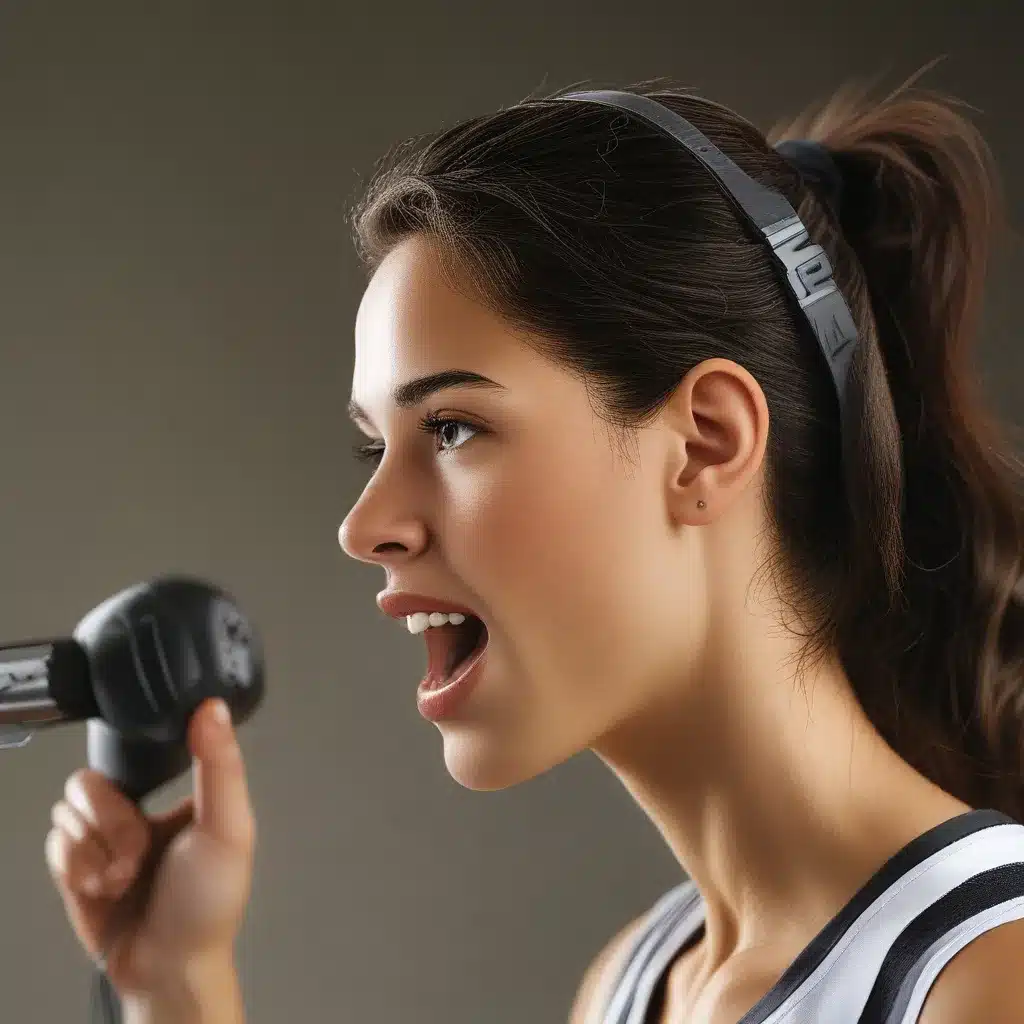
Embracing the Athlete’s Mindset: Unlocking the Secrets of the Singing Voice
As a lifelong music enthusiast, I’ve always been fascinated by the incredible feats singers can accomplish. From the powerhouse belters who shake the rafters to the agile vocalists who effortlessly navigate the highest stratospheres of their range, these vocal athletes captivate audiences and push the boundaries of human expression. But what does it really take to condition the voice for the rigors of performance?
I had the privilege of speaking with Barbara F. Worth, a renowned speech-language pathologist and voice specialist, who has dedicated her career to helping singers overcome vocal challenges and reach their full potential. Through our insightful conversation, I gained a deeper appreciation for the art of vocal athleticism and the crucial steps performers can take to keep their instruments in peak condition.
The Vocal Folds: Our Delicate Instruments
According to Barbara, the key to understanding vocal health lies in recognizing the true nature of our vocal apparatus. “Many people still refer to them as ‘vocal cords,’ but the medical term is actually ‘vocal folds,'” she explains. “These two folds of tissue in our larynx are the primary sound-producing structures, and they can vibrate an astonishing 100 to 1,000 times per second when we speak or sing.”
It’s this incredible speed and delicacy that makes the vocal folds so vulnerable to injury and overuse. “Just like the tissues in our limbs, the vocal folds can become swollen and irritated if we don’t give them time to rest and recover,” Barbara says. “And when that inflammation persists, it can lead to the development of benign growths called vocal nodules.”
The Nodule Nightmare: Recognizing the Signs of Trouble
Vocal nodules are a common occupational hazard for singers, actors, and other professionals who rely on their voices for their livelihoods. Barbara explains that these callus-like growths on the vocal folds are often triggered by “significant vocal overuse or abuse” – things like yelling, constant coughing, or poor singing technique.
“The first signs of trouble are usually a huskiness, hoarseness, or strain in the speaking voice,” Barbara notes. “And when singing, you might experience a loss of range, difficulties with onsets, and problems managing the passaggio – that tricky transition between chest voice and head voice.”
Interestingly, Barbara points out that women are more prone to developing vocal nodules than men, due to a combination of physiological and behavioral factors. “Women’s vocal folds are shorter and thinner, which makes them vibrate faster and more forcefully,” she says. “Plus, many women choose professions and activities that demand heavy voice use, like teaching, fitness instruction, and singing.”
Diagnosis and Treatment: Restoring Vocal Health
If you suspect you may be dealing with vocal nodules, the first step is to seek medical attention from an experienced otolaryngologist (ENT) or voice specialist. “They’ll use techniques like laryngoscopy or laryngovideostroboscopy to get a good look at your vocal folds and make an accurate diagnosis,” Barbara explains.
Once the problem has been identified, the next stage is voice therapy with a qualified speech-language pathologist. “The SLP will design a personalized treatment plan to help the nodules heal,” Barbara says. “This often involves vocal exercises, massage techniques, and retraining of the speaking and singing voice to eliminate any problematic behaviors.”
Importantly, Barbara emphasizes the need for patience and perseverance during the healing process. “It’s crucial that you follow your medical team’s recommendations and give your body the time it needs to recover,” she advises. “Trying to push through the pain or resume your normal singing schedule too quickly can lead to a relapse.”
Developing Vocal Hygiene: The Key to Lasting Performance
But the journey to vocal wellness doesn’t end with the treatment of existing issues. Barbara stresses the importance of developing healthy vocal habits – what she calls “vocal hygiene” – to prevent future problems and ensure a long, sustainable career.
“Just like an elite athlete needs to be mindful of their training regimen and recovery protocols, singers must approach their instrument with the same level of care and dedication,” she says. “This means being aware of your speaking and singing technique, staying hydrated, and giving your voice the rest it needs between rehearsals and performances.”
Barbara also encourages singers to seek out specialized training to strengthen their vocal technique. “The Institute for Vocal Advancement (IVA) has some fantastic exercises and resources to help you sing all genres of music in a healthy way,” she notes. “Working with a qualified vocal coach can make a world of difference in keeping your voice in peak condition.”
Embracing the Challenges, Celebrating the Triumphs
As I reflect on my enlightening conversation with Barbara, I’m struck by the parallels between the life of a singer and the life of a professional athlete. Both require an unwavering commitment to their craft, a deep understanding of their instrument, and the discipline to push themselves to new heights while respecting the limits of their bodies.
But perhaps most importantly, both the vocal athlete and the physical athlete must embrace the challenges and celebrate the triumphs – for it is in those moments of struggle and triumph that we discover the true power of the human spirit. And as I continue my own musical journey, I’m eager to apply these lessons of vocal conditioning and wellness, knowing that with the right mindset and the proper care, the sky’s the limit for what we can achieve.
After all, as the saying goes, “The voice is the instrument we’re born with, but it’s up to us to keep it in tune.” So let’s get to work, my fellow vocal athletes – the stage is waiting, and our voices are ready to soar.

